Don’t Want to Pay for Extra iCloud Storage? Here’s How to Manage It
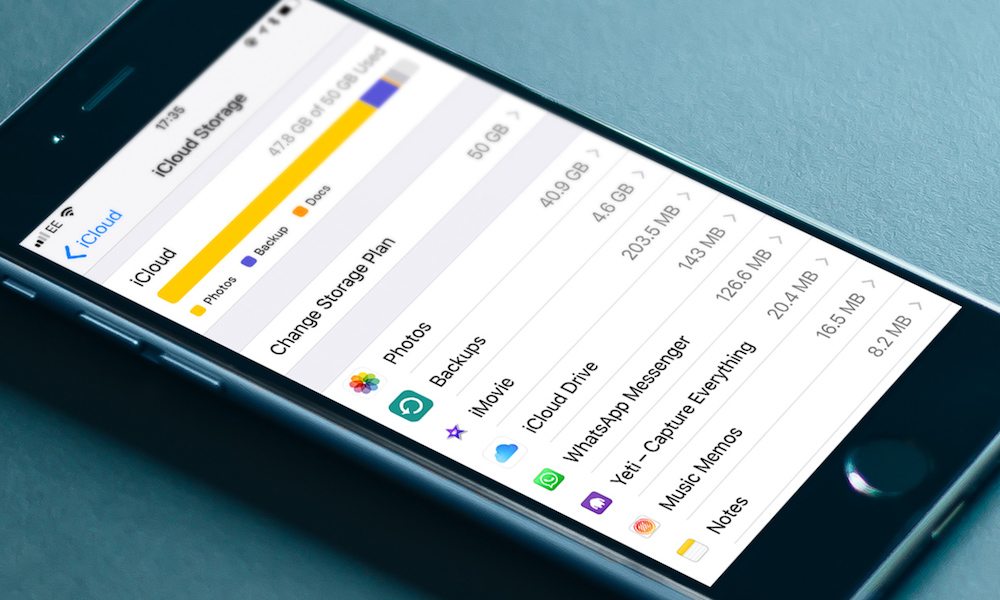 Credit: TapSmart
Credit: TapSmart
Toggle Dark Mode
If you’re an Apple user, you automatically get 5 gigabytes of iCloud storage for free. Unfortunately, most of us know how quickly that space can get filled up.
Your iCloud storage is used — obviously — when backing up your iOS devices. That’s convenient, but if you have a larger device with a lot of data, then you’ve probably already run past your limit.
Not just that, but if you have iCloud Photo Library enabled, then a good chunk of your cloud storage space is taken up by all of the photos and videos you take on your iPhone. And that’s not even counting the space used in document and data storage for iCloud drive, or email storage for iCloud mail.
Sure, additional iCloud storage is relatively inexpensive. The 50GB amount only costs about 99 cents a month, while higher-tier options are available for $2.99 (200GB) or $9.99 (2TB) a month.
But, of course, you might be on a budget, or simply unwilling to pay for extra cloud storage. Luckily, there are ways to use your free iCloud space more efficiently. Here’s how.
How to Check How Much Storage You’re Using
On iOS, you can easily see a chart with your current iCloud usage via Settings.

- Tap Settings.
- Tap your Apple ID (this will be your own name).
- Tap iCloud.
- You’ll see your storage usage broken down by category, as well as a handful of toggles (but more on that below).
For Mac users, you can check your iCloud storage by performing the following steps.
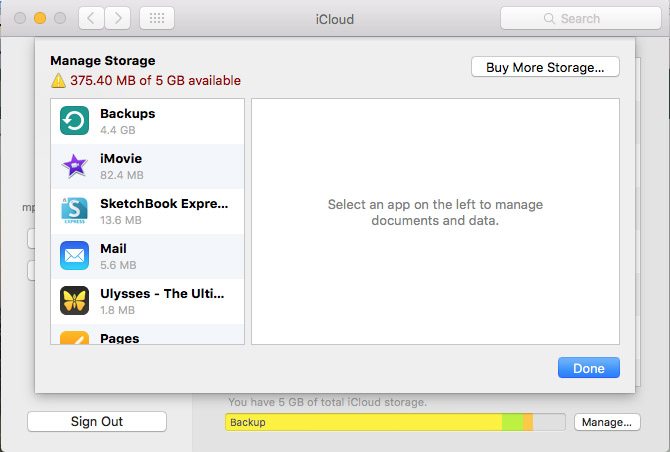
- Click on the Apple logo in the top-left corner of the menu bar.
- Click System Preferences.
- Locate and click on iCloud.
- You should see a bar with your current storage usage. To see more detailed information, click on Manage.
Ways to Reduce Your Storage Use
If you’re committed to sticking to using only the free iCloud storage amount, there are a few ways to reduce your overall usage.
Of course, with only 5GB to go around, you’re going to have to compromise in at least a few areas. The most important thing is to prioritize what you want to use your storage for. Here are some tips to help you tailor your own storage-reducing plan.
1 Don’t Backup to iCloud, Use iTunes Instead
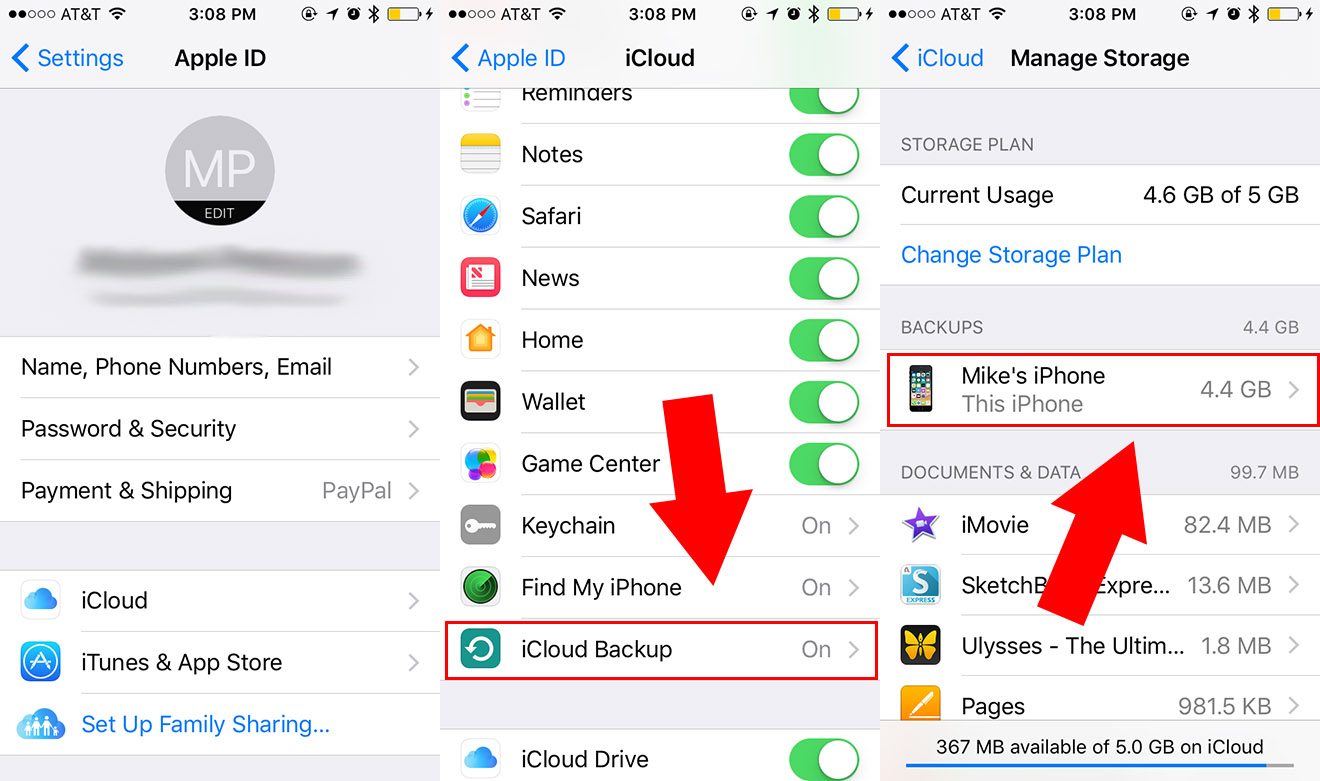
This is likely the largest storage hog in iCloud. Depending on your iPhone model, storage capacity, and the amount of data on your device, a single backup can use up the majority of your 5GB.
You don’t have to back up your iPhone to iCloud, either. A much more space-economical way to keep your data backed up is to simply use iTunes.
If your iCloud space is being hogged by iOS device backups, you try the following to clear up a significant portion of space — but only if you’re willing to forego iCloud backups entirely.
- Launch Settings.
- Tap on your Apple ID.
- Tap iCloud.
- Scroll down and uncheck iCloud Backup.
- Go back to the iCloud menu.
- Tap on the iCloud storage bar chart.
- Tap on Manage Storage.
- Tap on Backup.
- Tap on any backups listed, and then tap Delete Backup.
2 Disable iCloud Photo Library
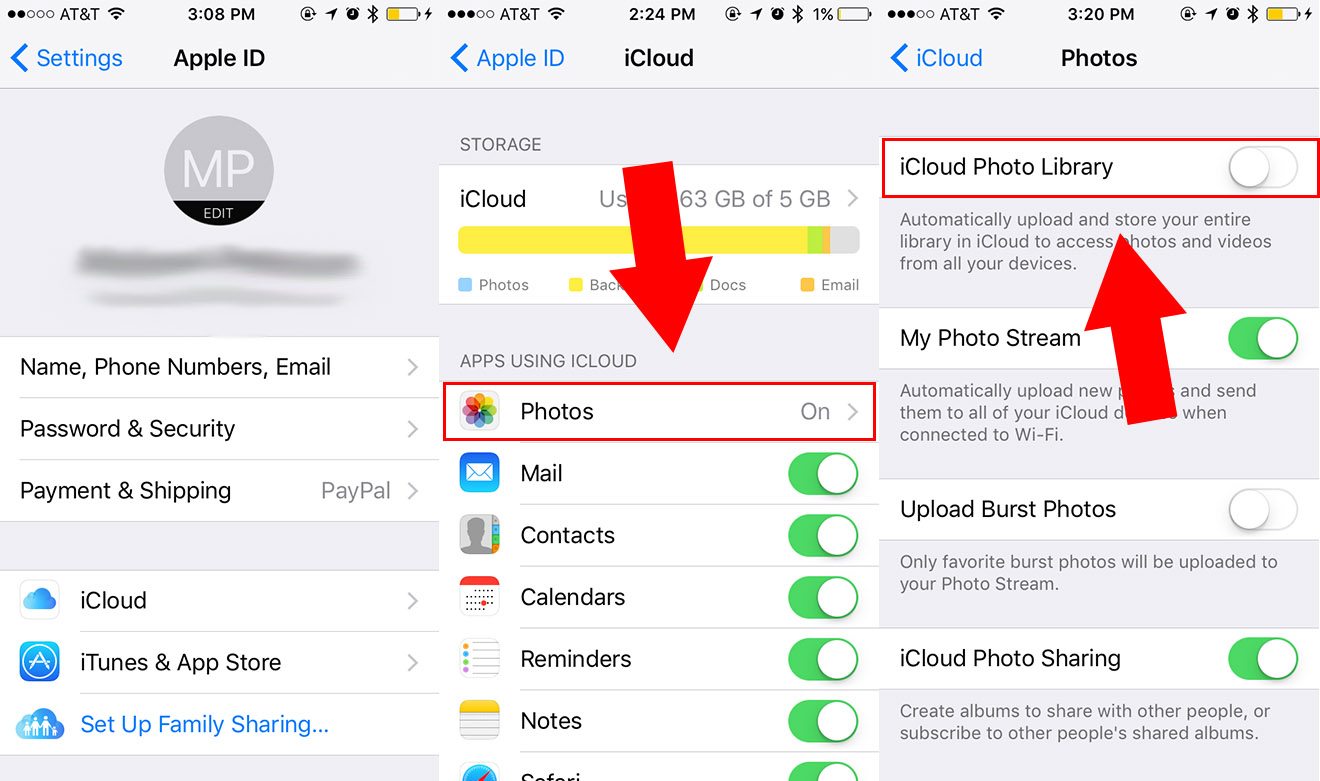
If you take a lot of photos and videos with your iPhone, and you have iCloud Photo Library enabled, then most of your 5GB is probably dedicated to storing your images and video clips in the cloud.
You can turn off this feature entirely by going to Settings > Apple ID > iCloud > Photos, and toggling iCloud Photo Library off. You’ll have 30 days to move your photos somewhere else before Apple deletes them.
While it’s useful, it’s not strictly necessary. If you have more than one Apple device, you can easily use My Photo Stream. Rather than storing images in the cloud, this feature simply sends those images to your other Apple devices — using the built-in storage of those devices.
You can enable this feature by going to Settings > Photos & Camera > and toggling My Photo Stream. Alternatively, you can also use a third-party service like Dropbox to store the images.
3 Reduce Your iCloud Mail Usage
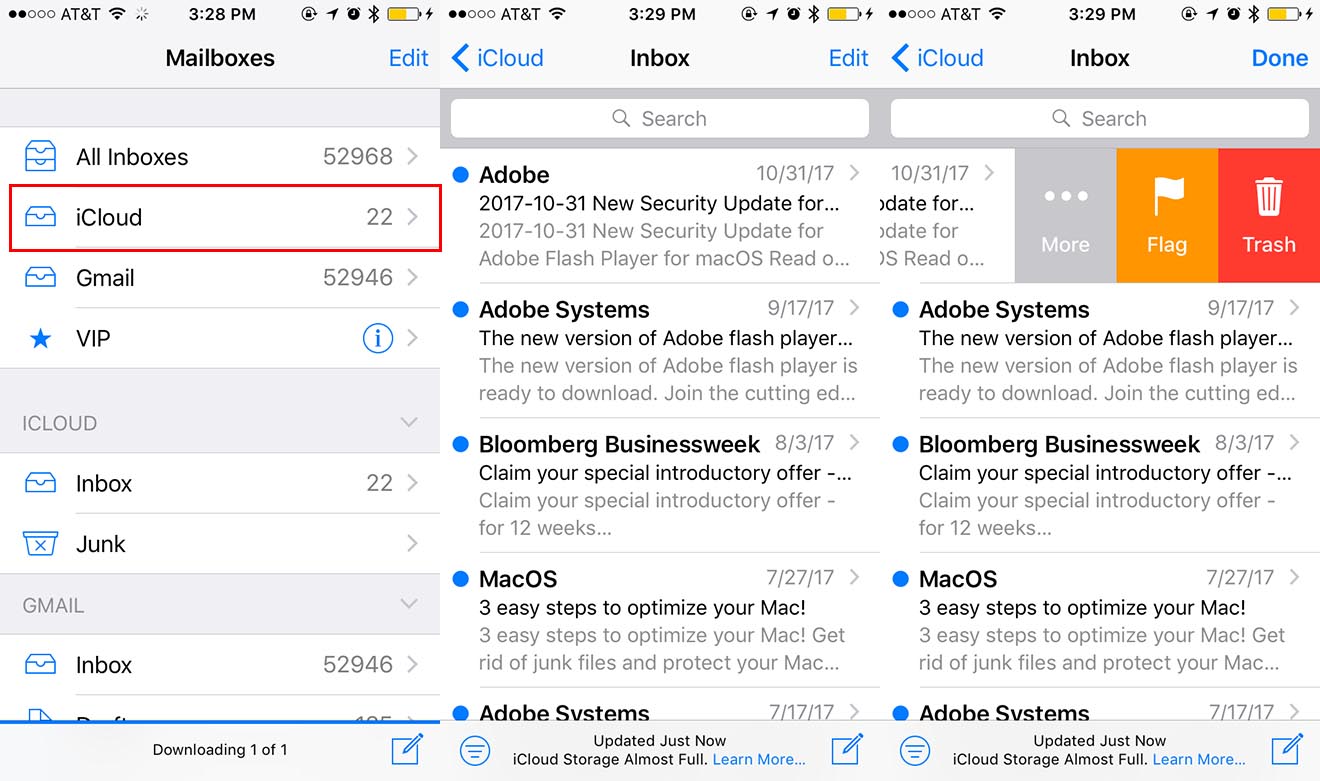
iCloud Mail is a free email address that’s included with Apple accounts. It may be useful for users who don’t have an account with Gmail or another email client, but the downside is that it stores all emails and attachments in iCloud.
The easiest way to clean up iCloud mail storage is to simply delete unwanted messages. Tap on your Mail app in iOS, and select your iCloud account. Just swipe left on an email and hit Trash to delete it.
Apple recommends that you also clear out the contents of your Junk and Trash folders from time to time.
A free email account may be an added perk of being an Apple user, but it might be worth opening a Gmail account for your primary email service — at least it won’t clog your precious iCloud storage.
4 Reduce Your iCloud Drive Usage
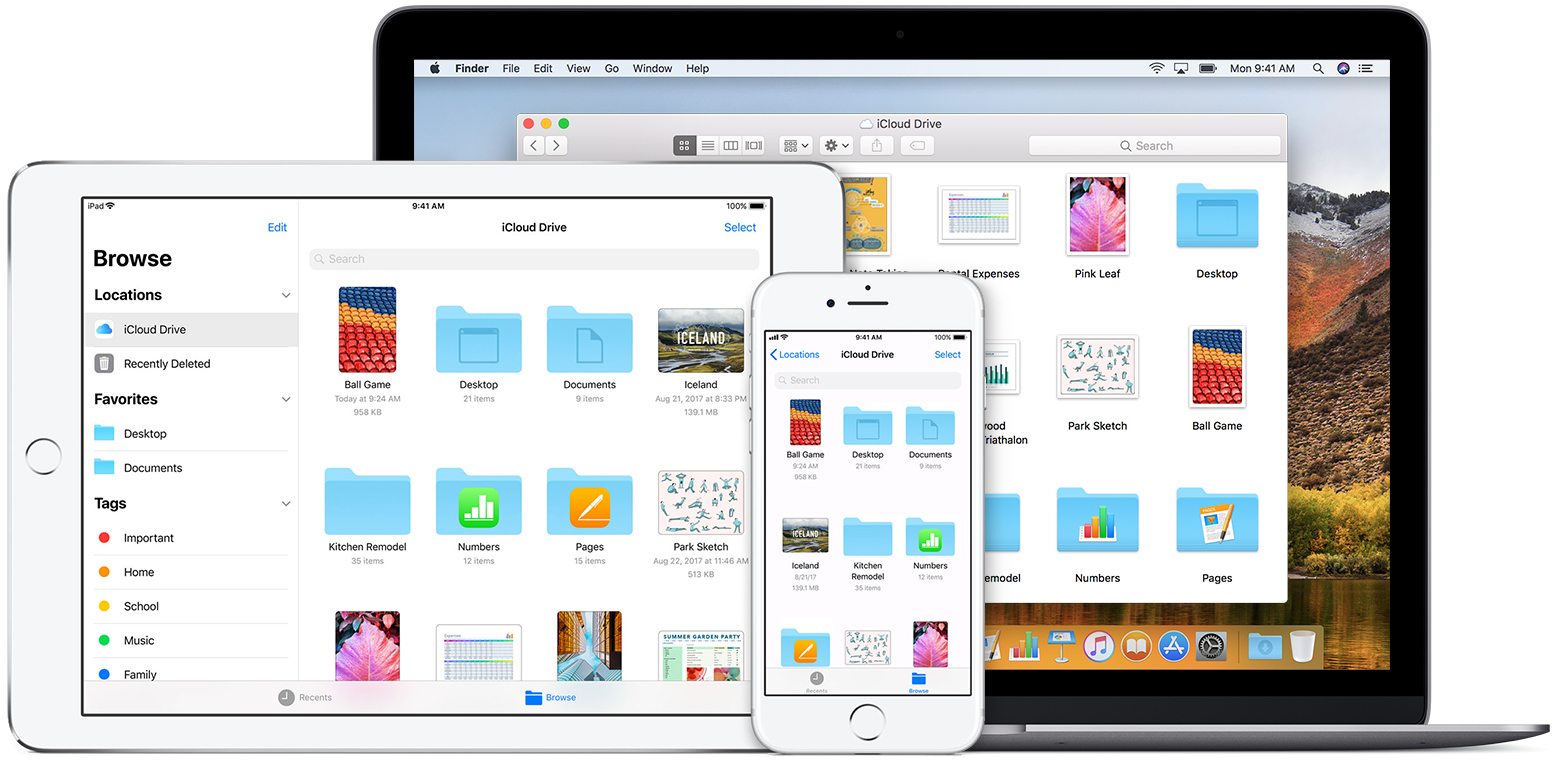
iCloud Drive is Apple’s proprietary cloud storage for documents. It’s a handy way to keep important documents in one place. Files created on iOS devices will automatically be stored in iCloud Drive, and are easily accessible with the Files app in iOS 11. For the most part, this is fairly easy to manage.
But, in more recent versions of macOS, the Documents folder and the contents of your Desktop are automatically stored and synced in iCloud Drive.
This allows you to access them from any device logged into your Apple ID — but if you’re saving a lot of data in Documents or to your desktop, it can really eat up your available storage.
To switch it off, just go to System Preferences > iCloud > iCloud Drive, and toggle Desktop & Documents off.
5 Consider Toggling Off Certain Services

In Settings > Your Apple ID > iCloud, you’ll see a variety of native Apple apps with a toggle next to them. Scroll down, and you’ll see quite a few other apps — both third-party or Apple.
These are the apps that use iCloud to seamlessly sync app data between devices. Again, like most iCloud features, it’s useful but not absolutely necessary.
If you uncheck Notes, for example, notes created on one device won’t sync to your other Apple products. Same goes for Safari, Calendars or Contacts. Or any of the third-party apps that use iCloud to sync app data.
The best advice here is to assess your own priorities, look for alternative third-party services or storage options (Evernote instead of Notes, perhaps), and disable the features you don’t need.






